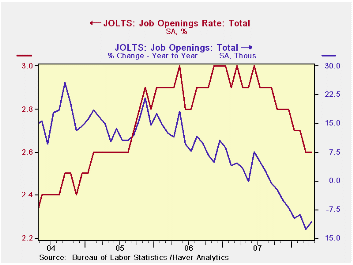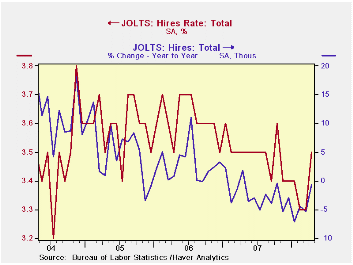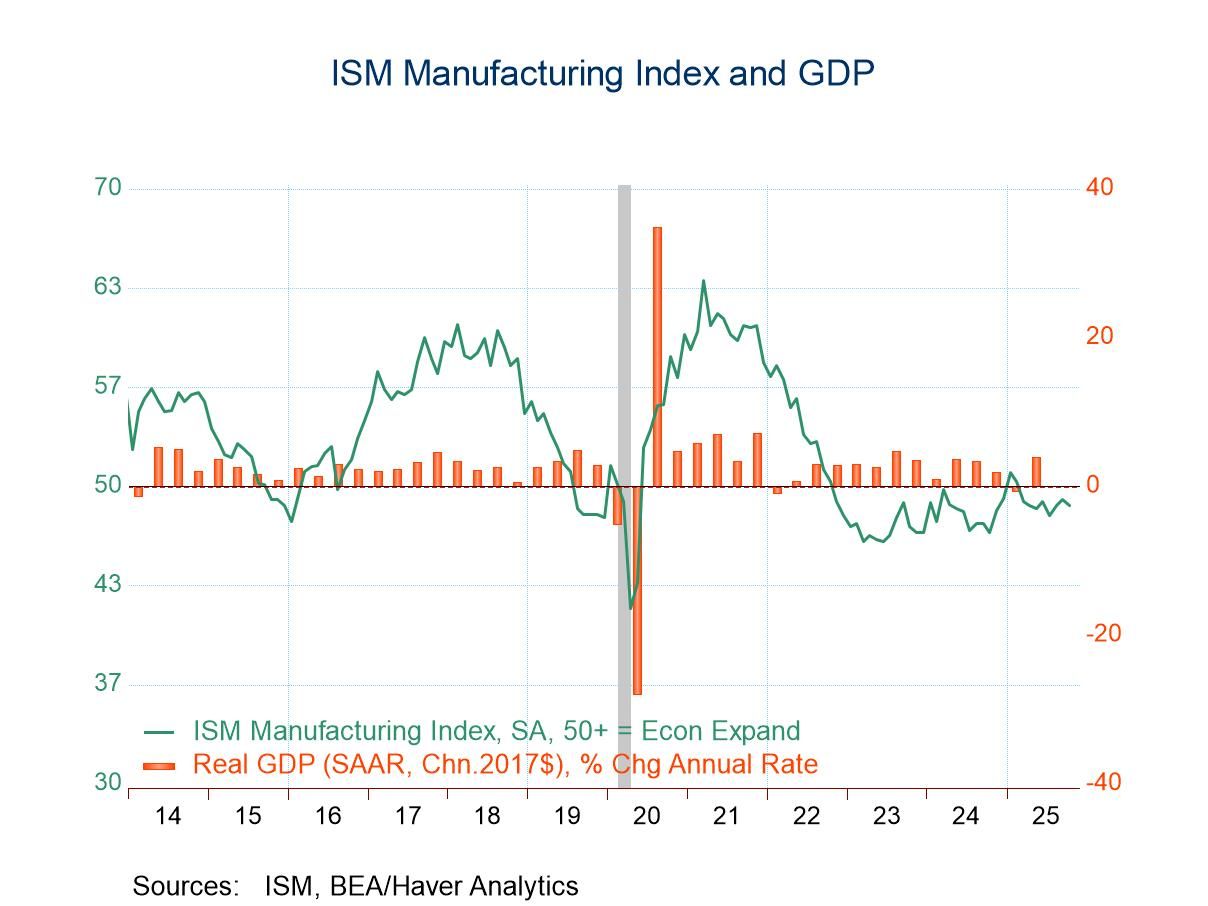 Global| Jun 11 2008
Global| Jun 11 2008JOLTS: April Job Openings & Hires Rose, Trend Down Hard
by:Tom Moeller
|in:Economy in Brief
Summary
The Bureau of Labor Statistics reported in the Job Openings & Labor Turnover Survey (JOLTS) that for April, the number of job openings rose 0.9% from March. That followed declines during most of the prior year. Since their peak in [...]

The Bureau of Labor Statistics reported in the Job Openings & Labor Turnover Survey (JOLTS) that for April, the number of job openings rose 0.9% from March. That followed declines during most of the prior year. Since their peak in January of 2007, the number of job openings have fallen 14%. In addition, the job openings rate during that period fell from a 3.0% high to 2.6% in April, unchanged from March. The job openings rate is the number of job openings on the last business day of the month as a percent of total employment plus job openings.
The actual number of job openings in the construction industry was unchanged in April versus March but the level of openings was down by more than one-half from the February '07 peak. Job openings in manufacturing were off by one-third from the late '06 peak while professional & business services job openings were off 7.9% from the peak. Job openings in the education & health sectors were off 8.2% from late '06.
By region, openings in the Northeast were down 23.2% from the late '06 peak and they were down 20.1% in the South. In the Midwest openings were off a lesser 6.9% from the peak and by 15.2% in the West since mid-2007.
The hires rate improved in April to 3.5% versus March but but remained well below the levels of the last several years. The hires rate is the number of hires during the month divided by employment.The actual number of hires rose in April by 4.7% from March after a 2.3% during all of 2007.
The job separations rate was unchanged m/m at 3.2% in April but that was down from 3.7% at the peak. Separations include quits, layoffs, discharges, and other separations as well as retirements. The level of job separations fell 10.3% from the peak.
The JOLTS survey dates only to December 2000 but has since followed the movement in nonfarm payrolls, though the actual correlation between the two series is low.
A description of the Jolts survey and the latest release from the U.S. Department of Labor is available here.
| JOLTS (Job Openings & Labor Turnover Survey) | April | March | April '07 | 2007 | 2006 | 2005 |
|---|---|---|---|---|---|---|
| Job Openings, Total | ||||||
| Rate (%) | 2.6 | 2.6 | 2.9 | 2.8 | 3.0 | 2.8 |
| Total (000s) | 3,705 | 3,672 | 4,148 | 3,974 | 4,272 | 3,863 |
| Hires, Total | ||||||
| Rate (%) | 3.5 | 3.3 | 3.5 | 41.9 | 43.4 | 43.1 |
| Total (000s) | 4,784 | 4,569 | 4,816 | 57,771 | 59,153 | 57,501 |
Tom Moeller
AuthorMore in Author Profile »Prior to joining Haver Analytics in 2000, Mr. Moeller worked as the Economist at Chancellor Capital Management from 1985 to 1999. There, he developed comprehensive economic forecasts and interpreted economic data for equity and fixed income portfolio managers. Also at Chancellor, Mr. Moeller worked as an equity analyst and was responsible for researching and rating companies in the economically sensitive automobile and housing industries for investment in Chancellor’s equity portfolio. Prior to joining Chancellor, Mr. Moeller was an Economist at Citibank from 1979 to 1984. He also analyzed pricing behavior in the metals industry for the Council on Wage and Price Stability in Washington, D.C. In 1999, Mr. Moeller received the award for most accurate forecast from the Forecasters' Club of New York. From 1990 to 1992 he was President of the New York Association for Business Economists. Mr. Moeller earned an M.B.A. in Finance from Fordham University, where he graduated in 1987. He holds a Bachelor of Arts in Economics from George Washington University.






